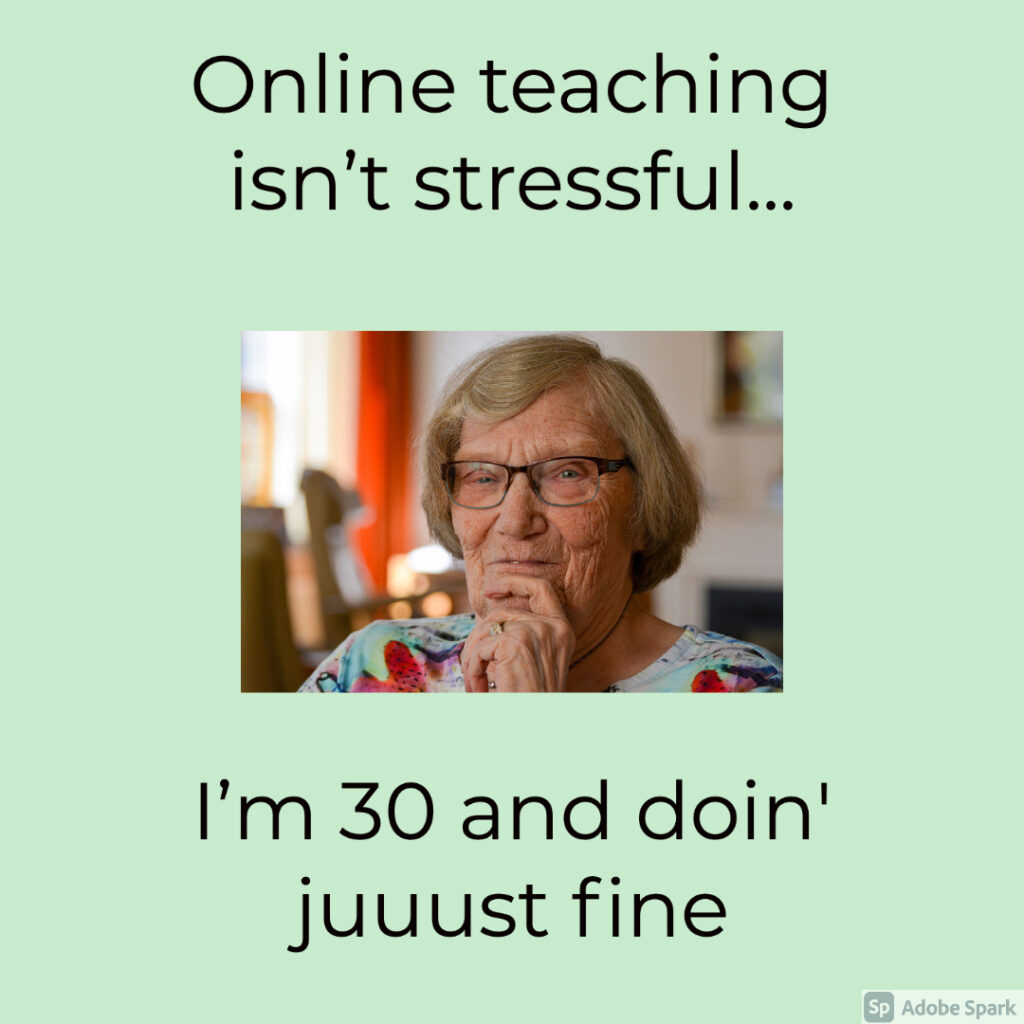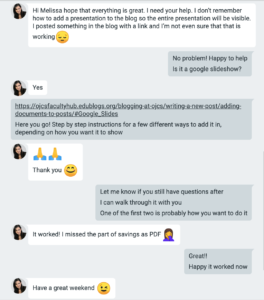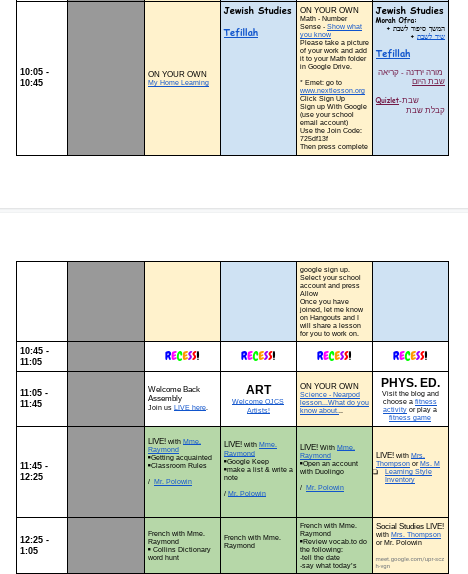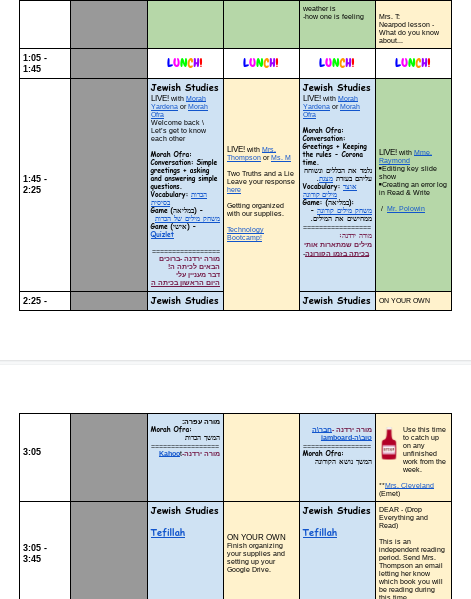The last 2 years have been like no other for many of us in the teaching profession. Personal stress from COVID, finding ways to engage students while teaching from home, managing our own families while teaching from home, pivoting back to the classroom and offering a hyflex model of teaching, going back to teaching from home, Delta, Omicron, and so on…
But for me, the last number of months have been some of the best. I alluded to taking multiple breaks from teaching last year due to personal reasons and COVID concerns. The truth is, my husband and I were on a personal journey with fertility and found out we were finally pregnant in July (going through this type of thing as a teacher is a WHOLE other post, that maybe I’ll write about one day). As I prepare for this next incredible chapter, it will be the first time in 15 years that I’ll really be stepping away from teaching.
As some of you may know, I currently teach grades 7 and 8 Language Arts, and I am also the Teaching and Learning Coordinator at my school. Moving to Middle School and teaching Language Arts has always been a dream for me. I taught grade 5 General Studies for a very long time, but being able to focus on one subject matter, and one I am so passionate about, was my ultimate goal. I spent much time and energy over the summer researching different programs, curriculums, learning outcomes, and expectations across different provinces and countries, to try to develop the best possible learning program for my students. I wanted to offer them something that would help them not just in my classes, but in all their classes, this year and beyond. I found the Evidence Based Writing Program and have been using many of their resources throughout the year. Already, I see such a transformation in my students’ work. The framework, while tricky for some to implement completely right now, is clear and mostly easy to follow. It offers a scaffolded outline for those who need it, or a loose skeleton for those who don’t, to ensure they are completely supporting their writing with relevant details, no matter the subject matter. The feedback I have received from our resource department has also been extremely positive. Firstly, they feel that the format of the outlines allows for differentiation for various student needs – a really important component when you have many students with differing IEPs. Secondly, both our resource teachers have taught in high school, and they feel that the language and format that this framework offers aligns perfectly with Ontario high school expectations. What more could a teacher want than to know she is properly preparing her students for what is to come in their learning journeys so they feel able to succeed?
It is my intention to leave a detailed outline, complete with lesson plans and resources of the English program, for whoever will be covering my maternity leave. However, I will be gone from teaching for at least a year (Canadian maternity leave options are amazing for all my American readers out there!). While all this will all be available to my replacement, I cannot guarantee that they will use it, or feel as passionately about it and committed to it as I do. I would have liked to see the long-term impact of this program on all aspects of my students’ writing, but I guess I’ll have to wait a few more years for that!
Taking maternity leave as a teacher isn’t new. In a profession that is mainly fulfilled by women, especially in elementary school, hundreds of thousands of women have taken a step back to spend time with their families, and hundreds of thousands of other teachers have stepped in to cover them. Leaving plans is helpful, and the “job description” isn’t hard to give. However, the other part of my work isn’t as straightforward. As the Teaching and Learning Coordinator at OJCS, the things I do and support teachers with isn’t as clear cut as what I do as a teacher. While some of the general responsibilities may be consistent with other coordinators in other schools, the position has evolved based on the needs of the teachers at my school, and the skills/interests that I possess that I bring to the position. This is the part that will be harder to walk away from, harder to describe, and harder to leave a roadmap for.
After discussing this with my Head of School, Dr. Jon Mitzmacher, we decided to combine two tasks into one. It has been our intention for a while to create a Faculty Portal on our website. We currently have a Faculty Blog, where we house some resources, the Blogging Course I created a few years ago, and every year around this time, teachers post reflections for their Professional Growth Projects and goals. We also have many Shared Google Drive folders with important forms and documents, tracking work we’ve done over the last 5 years. While we have tried to organize this in the best way possible, it is not always clear where to find things. It feels like we are finally ready for a central space that is more clearly organized where teachers can find important documents, resources, and tutorials, depending on their needs. We also discussed how through this project, I could create tutorials or visuals related to some of the main things I coach teachers on that could be turned into asynchronous learning opportunities. More specifically, I’ve narrowed it down to these topics:
The Prototyping Protocol – Renaissance STAR Reading – Blogs and Blogfolios – Hyflex/Distance Learning – Report Card Comment Writing – Makerspace Lessons – New Teacher Tech Tour
My first step to building the Faculty Portal was to research existing platforms that other schools are using. And where best to reach the largest audience with experience in an abundance of places? Twitter! By tagging specific people in Canada, in the US, in public and private schools, I was hopeful others would join in the conversation. Unfortunately, I only got a limited response. My most valuable conversation was with Gerry De Fazio, who shared the way she has organized a similar platform at her current school and gave me a good visual of what this could look like at OJCS. She also brought my attention to the user experience element, and suggested that too many ‘clicks’ often loses people.
Keeping our Prototyping Protocol in mind, I now needed to challenge my assumptions about how teachers were using the Faculty Hub, and how often. I created a survey for faculty to fill out, but similar to my Twitter post, I got very little engagement. Only 6 teachers participated. Based on their responses though, this was quite in-line with their engagement on the Hub as well.


Considering Gerry’s point about user experience, perhaps part of the problem with our current system is that there are too many landing spots, and navigating the Shared Drives in particular requires too many clicks. By rethinking and reorganizing what our teachers would want access to, and housing it in one central place, the hope is to improve the user experience, and in turn increase engagement.
Now the fun part begins…actually building this site! Josh Max, our Director of Technology, and I will be meeting weekly to choose a template, build the design, and start populating it with the information we already have. Once we know what it will look like, and what we think should be on there, we will share it out with faculty again to (hopefully) collect feedback.
Some questions we’re asking now:
- Should we purchase a template with an LMS option?
- Pros: An LMS option would allow us to, now or at any point in the future, add our own learning modules and courses to our site, with the ability to track who has completed each course and how often it is being accessed. From an accountability standpoint, this could be beneficial. When you think about the various procedures and protocols that are needed to run a school, perhaps turning some of those into asynchronous learning opportunities would be helpful. Being able to quickly see which faculty have indeed completed the “training” or listened to the information, would allow for easier follow-up with those who hadn’t. Another pro is that teachers could then favourite the trainings or tutorials they’ve completed, allowing them to easily find them again if needed.
- Cons: There aren’t many cons to this choice, only that we would be spending some money on a feature that may never get used. Even with a standard website template, we could still create a ‘tutorial’ section, and in the future, we likely could purchase an LMS add-on, perhaps with slightly limited options. With a simple tutorial page, we would lose the ability to track engagement with each video individually, and teachers wouldn’t necessarily be able to create their own playlists in a sense. However, do we really need that?
- What options do we have for continuing to add a blogging page for teachers to engage and share with each other? Since we want to eliminate the number of times teachers need to click around or login, do we have an option to link and embed our existing faculty blog? Can we add teachers as contributors only to a new blog that will live on this new site? Are there other options we haven’t thought of yet?
I’m excited to embark on the next phase of this project. I imagine it will be rewarding to leave a useful tool for my colleagues to use while I step away temporarily from school. It will be interesting to see how frequently it is used, what changes get made and what content gets added as it hopefully continues to evolve, even in my absence.
















